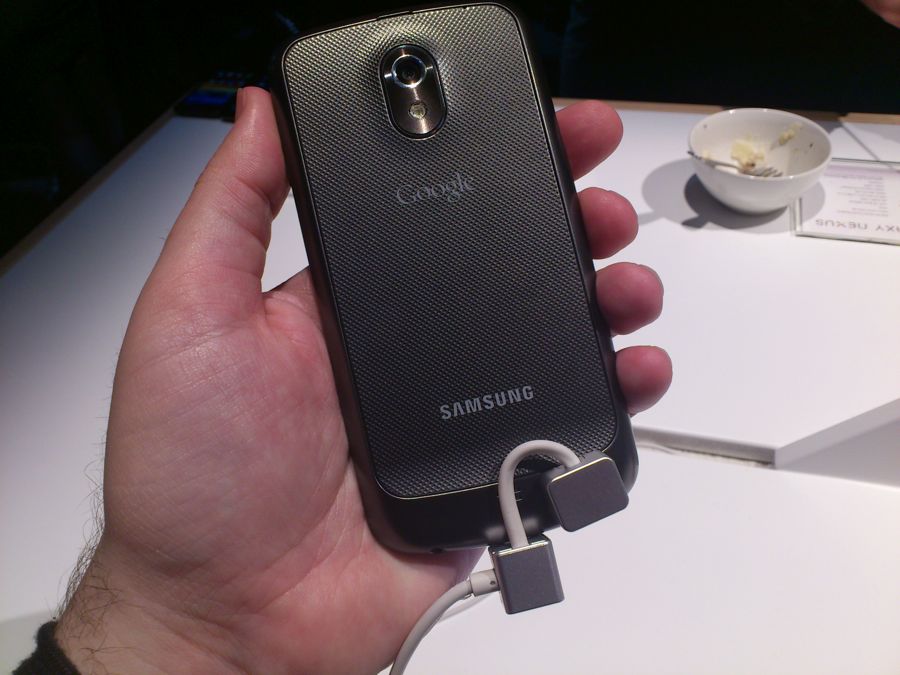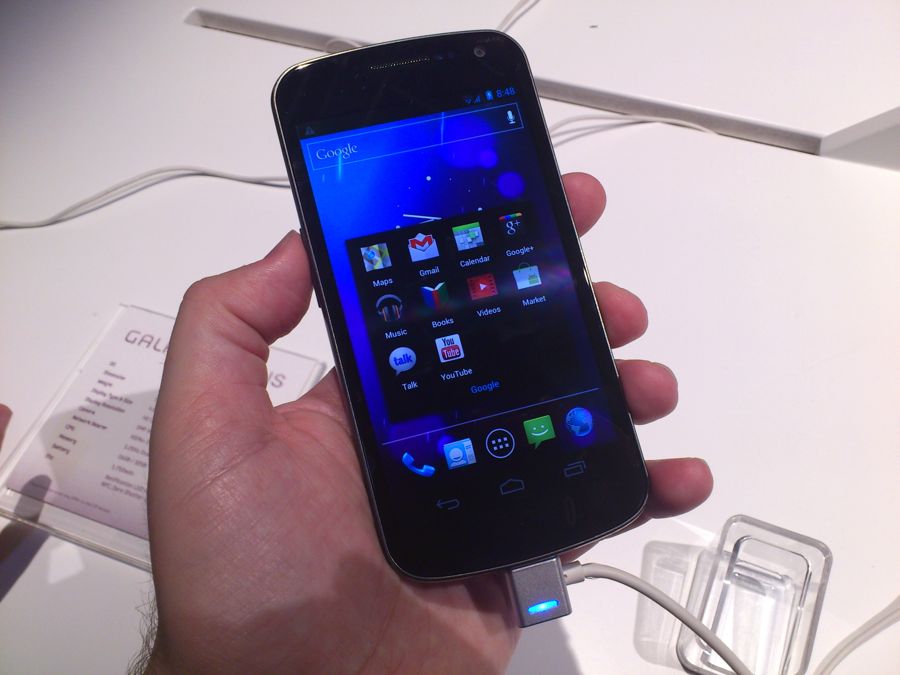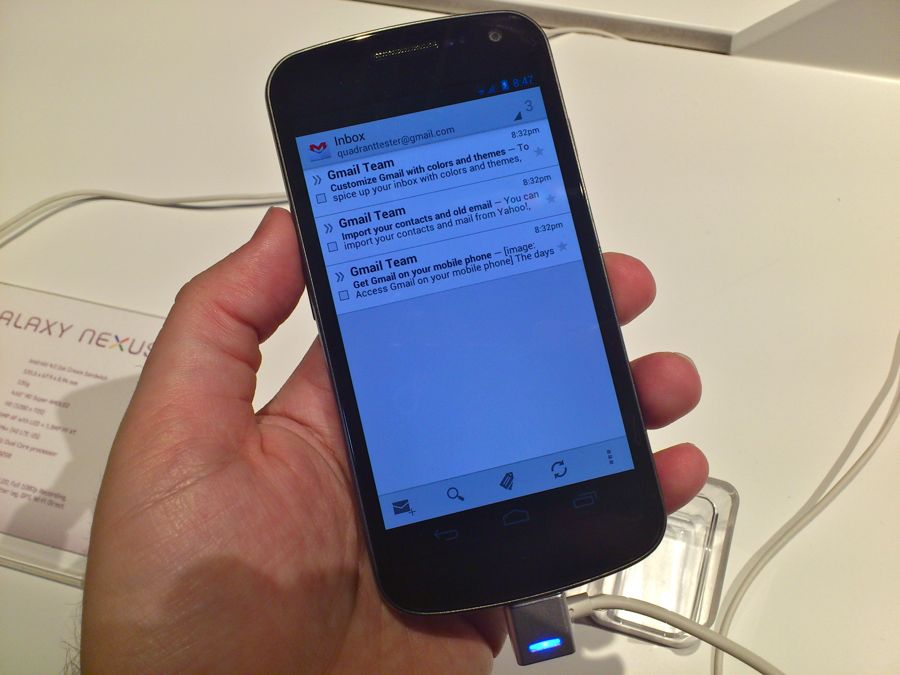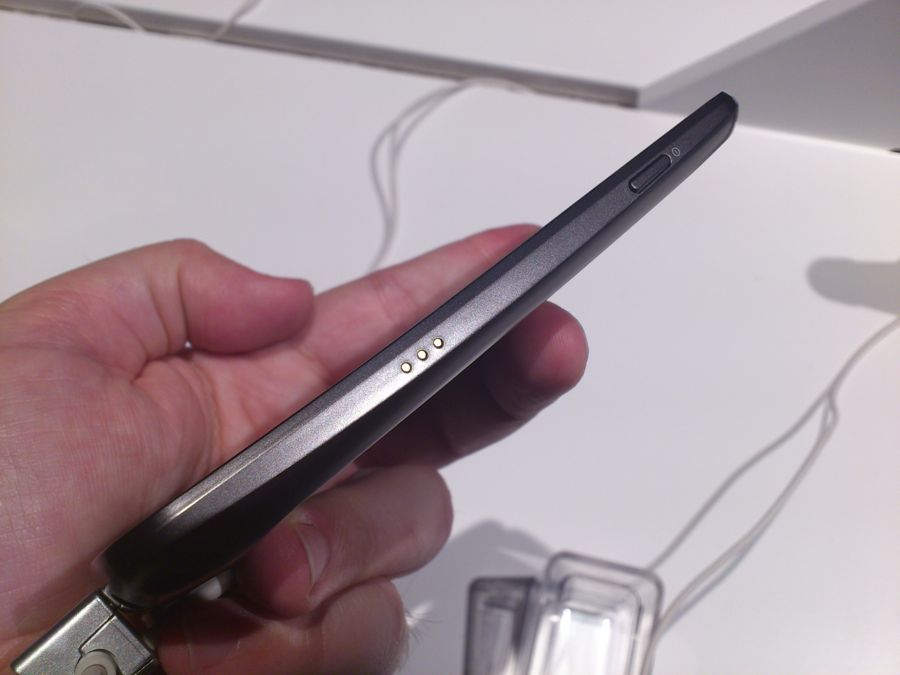Hands-on with the Samsung Galaxy Nexus with Android 4.0 and HD display
Android reborn

Given the sheer number of Android phones fighting to be noticed, the Samsung Galaxy Nexus looks like one that stands a pretty good chance of standing out from the crowd. We will soon find out when it goes on sale in the UK on November 17th.
After the joint-announcement with Google in Hong Kong earlier this month, although this time with no mention of Google in the handset name (unlike the Google Nexus One and Nexus S), we were also introduced to the latest version of the Android operating system, V4.0 - or Ice Cream Sandwich.
Both the hardware and software take the Android platform to the next level, of which the Galaxy Nexus is just the beginning. But, what a great way to start.
At an event to showcase the new Galaxy Note, a smartphone that thinks it's a tablet (or is that a tablet that thinks it's a smartphone?), we also got a chance to get our hands on the Galaxy Nexus and have a quick play.

It didn't take more than a few seconds to think to myself 'I want one', which makes quite a change from seeing the latest black slab that does little more than bump up the processor speed, or come with a different screen type.
For what it's worth, the 1.2GHz dual-core processor is no slouch, and is likely to remain competitive until at least Spring 2012, when we will have seen new handsets announced at the CES (January) and Mobile World Congress (February) that will increase speeds further, and also throw quad-core processors into the mix.
The Galaxy Nexus is a big leap on from the Nexus S, also made by Samsung, even though it still retains the slightly curved screen and casing. With an HD Super AMOLED display, it's hard to see where the screen ends and the bezel begins.


The camera is still 'only' 5-megapixels, but using an all-new sensor that works better in low light, as well as offering a zero shutter lag that really is that quick.
Besides the now obligatory 1080p HD video recording, there's a new panorama mode that works by sweeping the camera sideways. It's not a first, but adds a bit more functionality to what was previously a fairly basic camera interface on the bog-standard 'vanilla' Android software.
The biggest thing to talk about, however, is the display. The Galaxy Nexus comes with a screen that incorporates 1280x720 pixels. We've used many netbooks over the years with lower resolution displays, and this resolution is higher than many tablets too – including the iPad. Not bad for a 4.65-inch screen!
Along with the new font developed by Google, exclusively for Android 4, it has to be the nicest display I've ever seen on a smartphone and the perfect competitor to Apple's Retina Display on the iPhone and iPod touch.
Ice Cream Sandwich also changes the look and feel of the user interface, picking out the best aspects from both Android 2.x and Android 3 (aka Honeycomb) that was exclusively to tablets. Given the poor success of Android tablets to date, it's no bad thing that Ice Cream Sandwich will also be the OS for future tablets.
Like Honeycomb tablets, the Galaxy Nexus has the Android keys included as part of the display instead of actual keys below the screen. This allows them to move when rotating the phone display. When looking at pictures or watching video, they can disappear completely.
I'm not convinced this is really necessary, considering it eats into the screen real estate. Especially since the keys remain in the same place in landscape mode anyway – simply rotating the icons. Existing Android smartphones that may get an update to Android 4 will be able to continue using the physical keys. This could perhaps be the single negative feature of the new OS, although opinions will inevitably be divided.


Fortunately, Ice Cream Sandwich keeps the notification bar at the top of the screen, not at the bottom as on Honeycomb. You now get a visual task manager, with thumbnails of each open app, and the settings menu has been enhanced too.

One new app is a data manager that lets you monitor every app that consumes data, so you can watch for anything that may result in you exceeding your data allowance. You can also set a threshold to warn you if you're getting close to using up your limit in any given month.

Google has already updated the Market application for all Android smartphones, but Ice Cream Sandwich also updates other core applications, like Gmail and the calendar, each now able to take advantage of the bigger screen area. You can now read two line previews of messages, and the app also lets you perform searches within emails when offline.
The web browser also manages multiple windows better, with thumbnails of each open tab to allow quicker switching.

On the side of the phone are three rather subtle pins that allow you to dock the Galaxy Nexus, while the phone can be used with a range of wireless accessories, like keyboards and mice.
NFC also makes another appearance, this time being usable to send files to another compatible device by simply touching, or tapping, the two phones together.
Finally, just as Apple got its patent for allowing the unlocking a device using gestures, Google has introduced a clever new way of unlocking the device; facial recognition. Using the front-facing camera, you can simply look at the phone to unlock it.
In the event that it doesn't work, which is exactly what happened when Google tried to demonstrate it at the launch, or the light is too low as was the case with my hands-on time, you can revert to drawing a pattern or entering a PIN.
Suitably impressedThe Galaxy Nexus is a pretty incredible device and this time it's going to be more widely available than previous Google-exclusive models. With the improvements to the user interface, other enhancements like Samsung's TouchWiz or HTC's Sense UI are gradually becoming less important.
It's worth bearing in mind that the Galaxy Nexus won't be the only smartphone to have all of these features, as Ice Cream Sandwich will soon appear on all new Android smartphones, as well as being offered as an update to a selection of models released in 2011.
If you want to be guaranteed the fastest operating system updates in the future, and can't wait to see what the other manufacturers will come up with in the coming months (it's hard to imagine what more anyone else can do in the near future), you may want to get your pre-order in now!
